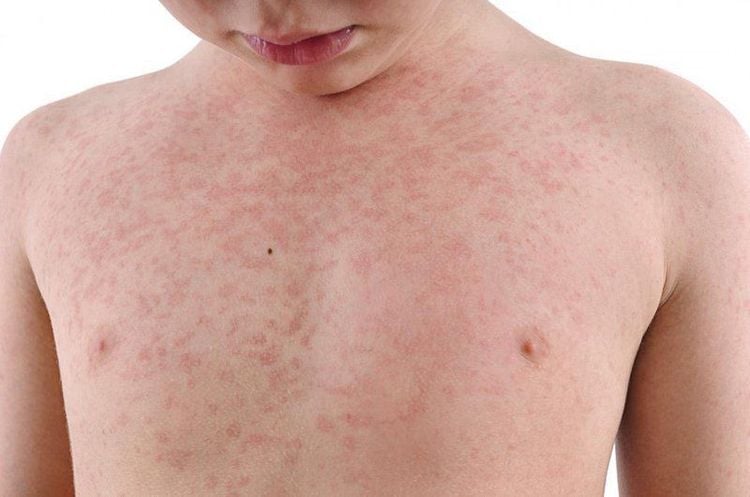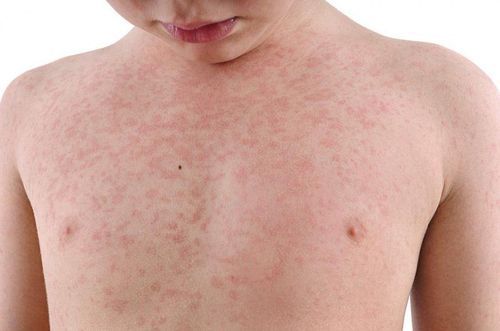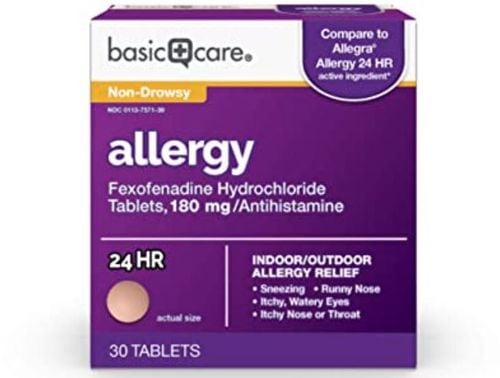This is an automatically translated article.
The article was professionally consulted by Doctor Head of Department of Medical Examination & Internal Medicine, Vinmec Hai Phong International General Hospital
Rubella, also known as German measles, is an infectious disease caused by the rubella virus. Most of the disease is mild, but pregnant women infected with Rubella can lead to dangerous complications such as miscarriage, stillbirth or birth defects for the fetus.
1. Causes and transmission route of Rubella
The disease is caused by the Rubella virus, which is an RNA virus, belonging to the togavirus family. Rubella usually thrives in the spring. The route of transmission is through the respiratory tract, the Rubella virus resides in the nasopharynx and lymph nodes. When a healthy person comes into direct contact with the mucus of the nose/throat or the droplets when the sick person coughs or sneezes, they can get sick. The contagious period for Rubella is from 7 days before to 7 days after the rash appears red.
Everyone can be susceptible to Rubella infection. People exposed to Rubella virus will get sick if they are not immune to Rubella virus, there are no cases of healthy people carrying the virus.
2. Symptoms of Rubella

Initially appearing on the head and face, then spreading all over the body but usually not as sequentially as measles
Rubella is usually mild, Rubella symptoms usually appear 16-18 days after exposure. Symptoms are similar to the flu. Common symptoms include:
Fever: Patients usually have a mild fever, about 38 degrees Celsius, accompanied by headache, fatigue, sore throat, clear runny nose, usually 1-4 days, after When the rash develops, the fever decreases. Swollen lymph nodes in the occipital region, neck, groin, painful pressure. Nodules appear before the rash, persisting for several days after the rash clears. Rash: Initially appears on the head and face, then develops all over the body but is not usually as sequential as measles. The rash is characterized by pink or slightly red, round or oval shape, 1-2mm in size, itching, usually lasts about 3 days and then disappears leaving dark spots on the skin. In addition, there may be joint pain, conjunctivitis. However, in about 50% of cases, there are no typical clinical manifestations, causing patients to mistake the symptoms of Rubella for other diseases.
3. Rubella complications with pregnant women
Rubella is usually a mild illness that usually goes away without complications. However, for pregnant women, the disease causes many dangerous complications of Rubella, especially in the first 3 months of pregnancy such as miscarriage, stillbirth or birth defects for the fetus such as birth defects. small children, psychomotor retardation, deafness, blindness, heart disease (congenital Rubella syndrome). In addition, babies born to mothers infected with Rubella can also have jaundice, hemorrhage, diabetes, splenomegaly, vitreous bone...
Congenital Rubella syndrome can be seen in 70-90% infants born to mothers infected with rubella during the first 3 months of pregnancy (rubella virus in mother's blood → infected placenta → infected embryo). Therefore, all women before deciding to become pregnant should be tested to determine if they are immune to Rubella.
Complications of Rubella are especially dangerous in the first 3 months of pregnancy such as miscarriage, stillbirth or causing birth defects for the fetus.

4. How to prevent Rubella disease
Rubella has no specific treatment, so vaccination is the best way to prevent the disease. Rubella prevention measures include:
Widespread vaccination of children aged 12-24 months. Common side effects after vaccination: Fever, lymphadenopathy, polymorphonuclear leukocytosis, joint pain. For women who intend to become pregnant, they should take the initiative to get tested to determine whether they are immune to Rubella or not, if not, they should be vaccinated with the vaccine at least 1-3 months before becoming pregnant. The vaccine should not be given during pregnancy because it can cross the placenta and infect the fetus. Women during pregnancy should limit contact with people with fever, rash or children with congenital rubella. When there are symptoms such as fever, rash, swollen lymph nodes during pregnancy, especially in the first 3 months, it is necessary to go to specialized medical facilities for examination, diagnosis and consultation. Rubella vaccine is contraindicated in immunocompromised patients, with caution in patients with a history of severe allergy to gelatin, neomycin or previous vaccinations, who are febrile. Rubella is completely preventable and completely treatable. When you have symptoms of the disease, calmly find out the cause and consult a doctor to make the treatment process for Rubella go smoothly and quickly.
Please dial HOTLINE for more information or register for an appointment HERE. Download MyVinmec app to make appointments faster and to manage your bookings easily.
Reference source: Department of Preventive Medicine - Ministry of Health













